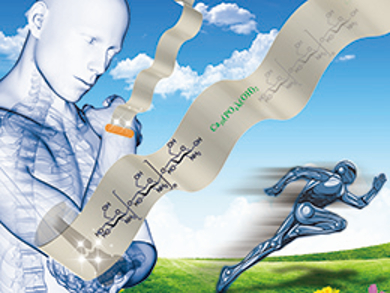With an aging population, there is an increasing demand for biomedical materials for applications such as bone-fixing and defect repair. Compared to traditional metal implants, biomaterials offer superior biocompatibility and tunable mechanical properties, and cause less post-operative problems. Hydroxyapatite (HAP, Ca10(PO4)6(OH)2) is an important inorganic component of biological hard tissues, and as such is a key focus of composite biomaterial research.
Ying‐Jie Zhu, Feng Chen, Shanghai Institute of Ceramics, Chinese Academy of Science, and colleagues have created a biopaper for medical applications. First, they synthesized hydroxyapatite in the form of ultra-long nanowires. This morphology gives enhanced mechanical properties as the wires interweave. The wires were then suspended in a solution of chitosan, a biocompatible polymer, before being cast into sheets of biopaper.
By varying the proportions of the two components, the properties can be fine-tuned for different applications. High levels of HAP give a mechanically tough paper that can act as a support for healing fractured bone. At lower HAP levels, the paper is more absorbent and can be used as a dressing material for open wounds. The hydroxyapatite biopaper is therefore a promising candidate for a range of biomedical uses.
- Highly Flexible Multifunctional Biopaper Comprising Chitosan Reinforced by Ultralong Hydroxyapatite Nanowires,
Tuan-Wei Sun, Ying-Jie Zhu, Feng Chen,
Chem. Eur. J. 2017.
DOI: 10.1002/chem.201605165




